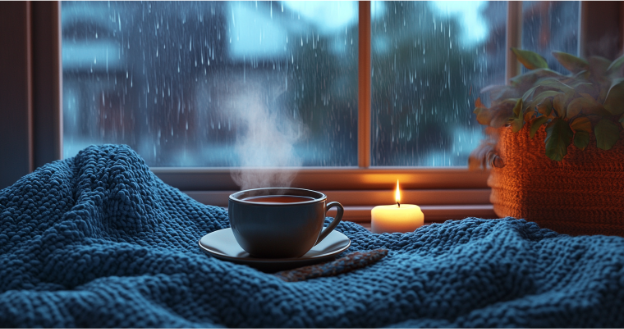Bedtime Routine Reset: Beat the DST Slump and Sleep Better!
Daylight saving time is a twice-a-year event where we lose or gain an hour daily. It may sound trivial and harmless, but even a small shift in time can throw your sleep schedule out of sync. So if you’ve been feeling extra tired or irritable since the clocks changed, you’re not alone. Thankfully, there are simple ways to help your body adjust. This guide will show you a better bedtime routine to help reset your circadian rhythm after the daylight saving time change. Here’s how to get back to feeling rested and refreshed.
⏰ What Exactly Is Daylight Saving Time?
Daylight saving time (DST) is when we move the clocks forward one hour in the spring and back one hour in the fall. It was designed to make better use of daylight and give us more sunlight in the evenings during warmer months. While it seems simple, this shift can disrupt your circadian rhythm—your body’s internal clock that regulates sleep and wake cycles—and leave you feeling groggy and moody.
DST doesn’t just affect sleep; it can also impact your mood, focus, and appetite because your body’s routine goes haywire. The good news is that a simple bedtime routine can help you reset quickly. Here’s how:
1. Start Your Day with Sunlight
Light is the biggest influencer of your circadian rhythm. When you wake up, your body’s internal clock needs a clear signal that it’s time to start the day. The best way to do this is to step outside and soak up some natural sunlight.
Even 10 minutes of morning light can make a difference. If it’s cloudy or you’re short on time, sit by a bright window. The goal is to get natural light exposure early in the morning to boost your serotonin levels and make you feel more awake.
Pro Tip: If you wake up before sunrise, try a light therapy lamp. It mimics natural sunlight and keeps your internal clock on track.
️ 2. Keep a Consistent Sleep Schedule
While sunlight kickstarts your day, a consistent sleep schedule can keep your rhythm steady. Your body thrives on routine, especially when it comes to sleep. Going to bed and waking up at the same time daily reinforces your natural sleep-wake cycle.
After daylight saving time, avoid sleeping in or taking long naps. Although tempting, napping can throw off your internal clock. Instead, adjust gradually by shifting your bedtime 15 minutes earlier each night until you’re back on track.
Why It Works: Consistency helps your body anticipate sleep and wake times and makes the sleep cycle easier and more natural over time.
3. Cut Back on Caffeine After 2 PM
If your sleep feels off, your afternoon coffee might be part of the problem. Caffeine can stay in your system for up to 8 hours, which then makes it harder to fall asleep.
Instead of reaching for coffee during that 3 p.m. slump, drink a glass of cold water or take a quick walk. These give you a natural energy boost without disrupting your sleep.
Bonus Tip: Check for hidden caffeine in chocolate, green tea, sodas, and even some medications.
4. Power Down Devices Before Bed
Screens—phones, tablets, TVs—emit blue light that tricks your brain into thinking it’s still daytime. This light apparently suppresses melatonin, the sleep hormone, which explains why it’s so tough to doze off.
Aim to turn off screens at least 30 minutes before bed. Struggling with that? Swap screen time for reading, journaling, or listening to calming music. If you need to use your phone, switch it to “night mode” to reduce blue light exposure.
Why It’s Important: Less screen time helps your brain wind down naturally for better sleep.
5. Move Your Body During the Day
Regular physical activity helps regulate your circadian rhythm and reduce your stress levels. In turn, these activities can improve sleep quality, so aim for at least 30 minutes of moderate exercise most days.
Exercising doesn’t have to be intense—brisk walking, dancing, or even gardening counts. Just avoid high-intensity workouts within two hours of bedtime to avoid raising your adrenaline and body temperature.
The Sweet Spot: Morning or early afternoon exercise boosts daytime energy and supports restful sleep at night.
6. Create a Relaxing Bedtime Routine
A calming bedtime routine signals your brain that it’s time to wind down. Try activities like:
- Taking a warm bath or shower
- Gentle stretching or light yoga
- Deep breathing exercises
- Listening to soothing sounds
Repeating these activities nightly helps your brain associate them with sleep and makes it easier to drift off.
Ease Into Spring, One Night at a Time
Daylight saving time may throw you off, but you’ve got the tools to take control. Simple habits like soaking up morning sunlight, sticking to a sleep schedule and caring for your body can make all the difference. Trust the process, stay consistent, and soon you’ll feel energized again. Here’s to restful nights and brighter mornings ahead!
❓ Frequently Asked Questions (FAQs) About Bedtime Routine During DST
- What is daylight saving time, and how does it affect sleep?
Daylight saving time shifts the clock forward or backward by an hour, disrupting your body’s natural sleep-wake cycle. - How long does it take to adjust after daylight saving time?
Most people adjust within a week, but it can take up to two weeks for your body to fully adapt. - Why is morning sunlight important for sleep?
Morning sunlight helps reset your internal clock, boosting alertness during the day and improving sleep at night. - Can napping help if I’m feeling tired after the time change?
Short naps (20–30 minutes) can help, but long naps may make it harder to sleep at night. - Is it bad to sleep in on weekends to catch up?
Yes, sleeping in disrupts your sleep routine. Aim to wake up at the same time every day for better sleep. - Does exercise improve sleep after daylight saving time?
Yes, regular exercise helps regulate your sleep cycle. Just avoid intense workouts close to bedtime. - How does caffeine affect sleep?
Caffeine stays in your system for hours, making it harder to fall asleep if consumed late in the day. - Can screen time really impact my sleep?
Yes, blue light from screens suppresses melatonin, making it harder to fall asleep. - What’s the ideal bedroom temperature for good sleep?
Around 65°F (18°C) is ideal, as cooler environments promote deeper, more restful sleep. - What’s the quickest way to reset my sleep schedule?
Get morning sunlight, stick to a consistent bedtime routine, and avoid screens before bed for faster adjustment.
Trending
Get Updates
SIGN UP FOR OUR NEWSLETTER TODAY

Sunday Reset Routine: Energize Your Life This Spring

Rainy Day Self-Care: Feel-Good Activities for April Showers Days

Wellness Rituals for St. Paddy’s: Celebrate & Stay Energized!
Related

Sunday Reset Routine: Energize Your Life This Spring

